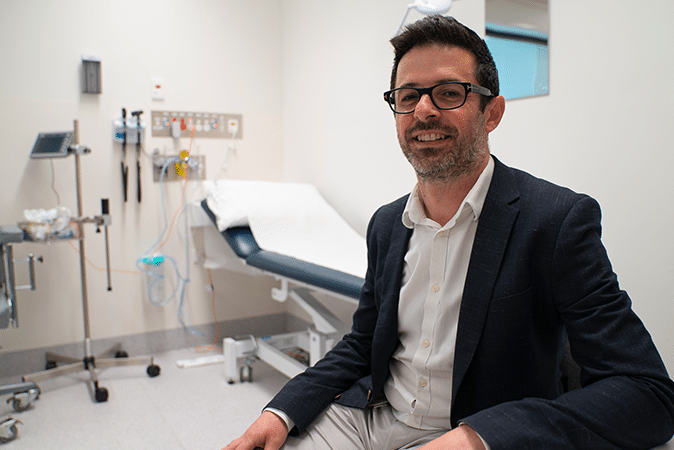What are the Symptoms of Ductal Carcinoma in Situ?
DCIS doesn’t typically present with any signs or symptoms and cannot usually be felt. It also doesn’t present with symptoms sometimes seen in invasive breast cancers. However, if you notice any irregularities in your breast, you should speak with your GP or doctor.
How is DCIS Diagnosed?
Most cases of DCIS are found following routine screening with mammograms and appear as small clusters of calcifications (areas of calcium that can be seen on the mammogram x-ray) that have irregular shapes and sizes. Calcifications can also occur without any evidence of DCIS or breast cancer, depending on the way that they look and are referred to as ‘benign’.
How is Ductal Carcinoma in Situ Treated?
Treatment of DCIS usually involves breast surgery and radiotherapy, and occasionally includes surgery to remove lymph nodes and hormonal therapies. The goal of DCIS treatment is to ensure the abnormal cells in the milk ducts of the breast do not spread and become invasive breast cancer, and to prevent it recurring.
Breast conserving surgery is often recommended for patients undergoing treatment for ductal carcinoma in situ. This is sometimes referred to as a lumpectomy, partial mastectomy, or wide local excision. Mastectomy, or the full removal of the breast, may be considered if the DCIS is widespread in the breast.
After breast surgery, radiation treatment may be recommended to lower the chance the DCIS will come back. If the patient has had a mastectomy for DCIS, radiation is not usually needed.
In addition to radiation, some patients with hormone receptor positive DCIS may take the drug tamoxifen or another hormonal therapy to lower the chance of the DCIS returning. Also, after a diagnosis of DCIS, there is a chance of another DCIS, or breast cancer occurring in one or the other breast, and this hormone blocking therapy helps reduce that risk.
Chemotherapy is not used for DCIS as the abnormal cells are contained in the breast.
DCIS can be treated successfully, and most women diagnosed and treated for DCIS will not develop a recurrence of DCIS, or invasive breast cancer.
Is DCIS Breast Cancer?
DCIS is not considered in the same category as breast cancer, as we more commonly understand it. However, a diagnosis of DCIS can increase your likelihood of developing invasive breast cancer later in life.
Is Ductal Carcinoma in Situ Life-Threatening?
Although these abnormal changes have the potential to turn into invasive cancer cells eventually, a diagnosis of DCIS is not life-threatening as a woman cannot die from DCIS. This is because the abnormal cells are contained within the milk ducts.
Support Us
Help us to change lives through breast cancer clinical trials research



